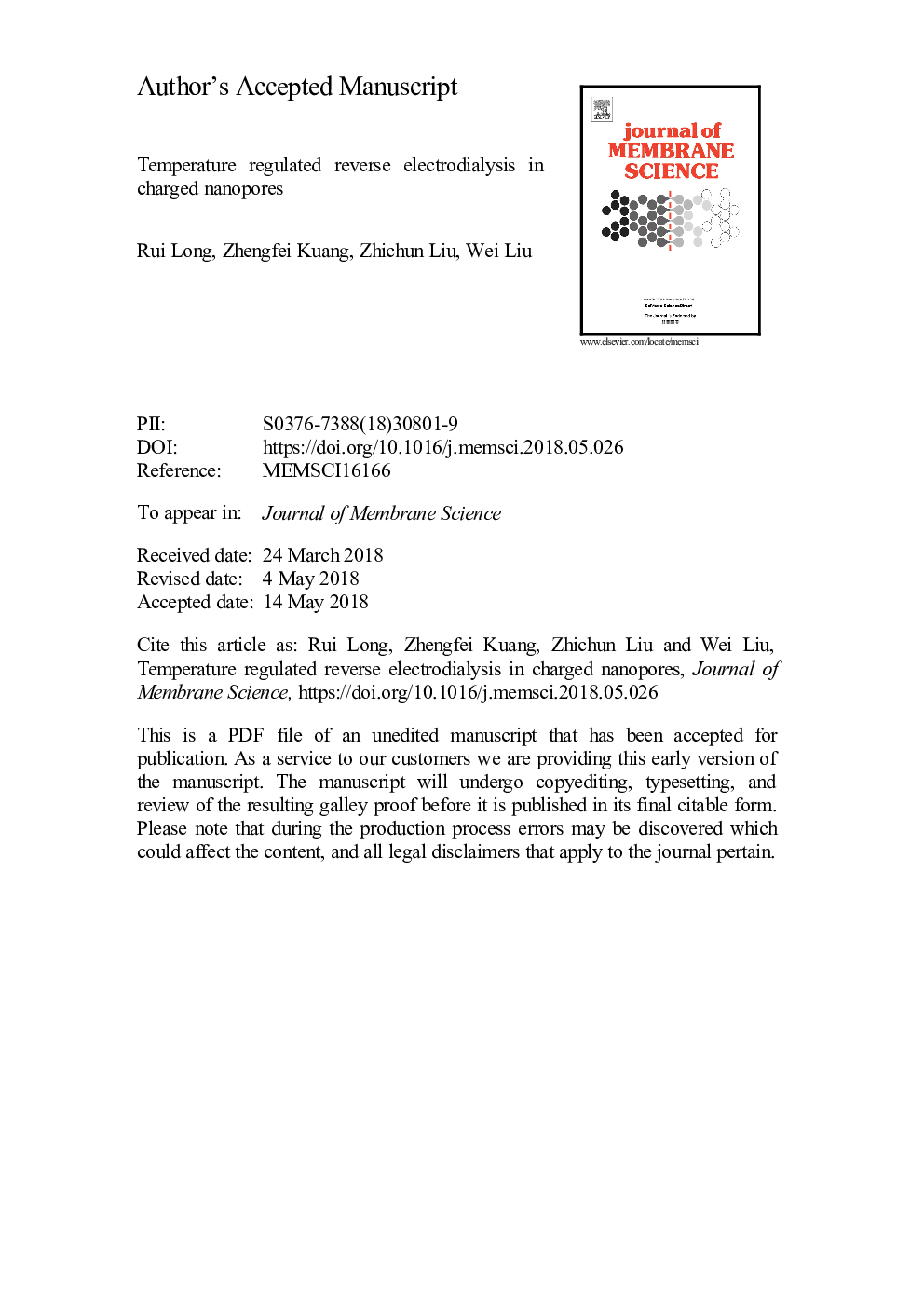| Article ID | Journal | Published Year | Pages | File Type |
|---|---|---|---|---|
| 7019775 | Journal of Membrane Science | 2018 | 23 Pages |
Abstract
Nanofluidic reverse electrodialysis (RED) is a promising way to utilize the vastly existed salinity gradient energy. In this paper, impacts of temperature gradient across the nanopore on the ion transportation and power generation performance are systematically investigated, and a theoretical description has been derived to illustrate the energy conversion efficiency under asymmetric temperatures. Results reveal that under isothermal reservoirs, the maximum power increases with increasing temperatures, while the corresponding efficiency presents no obvious difference due to synchronous enhancement of the cation and anion diffusive coefficients. For salt solutions under asymmetric temperatures, at small concentration ratios, the larger average temperature, the larger maximum power output due to augmented enhanced ion transportation. A negative temperature gradient contributes to the maximum power efficiency while the positive one decreases the maximum power efficiency. At large concentration ratios, the nanofluidic RED system exhibits different behaviours. A negative temperature gradient contributes to the maximum power and the corresponding efficiency while the positive one decreases the maximum power and the corresponding efficiency. The results in this paper may offer desirable guidance for improving nanofluidic RED performance.
Related Topics
Physical Sciences and Engineering
Chemical Engineering
Filtration and Separation
Authors
Rui Long, Zhengfei Kuang, Zhichun Liu, Wei Liu,
